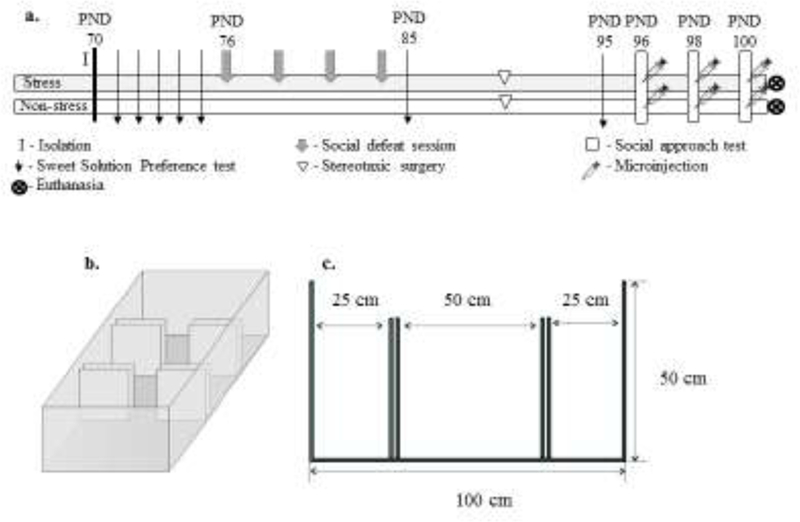Figure 1 –

a. Experimental procedure. Stress: rats exposed to intermittent episodes of social defeat; Non-stress: control animals; n = 13–14 rats per group; b. Schematic representation of the social approach apparatus in a three-dimensional view; c. Length and height of the chambers and walls. The central chamber has openings that allow the rat to move freely throughout the whole apparatus. After the habituation period (5 min), an unfamiliar ovariectomized female was placed inside a small acrylic cage in one of the side chambers and an identical empty cage was placed in the opposite side chamber. The walls were removed and the rat could move freely throughout the three chambers. The positions of the female and the empty cage were alternated between side chambers and upper and lower corners between sessions.
